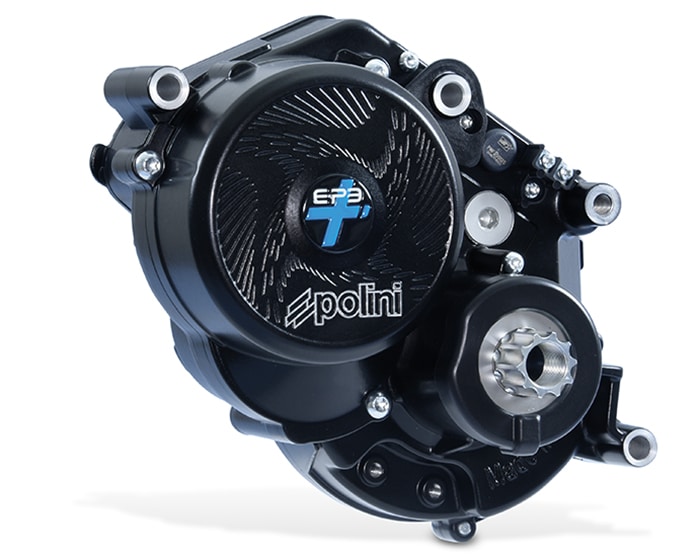Electric motors are increasingly influencing our daily life. Can you guess how many electric motors are somewhere in your home? In mine more than 50.
I just reckoned fans of three PCs, in the kitchen, in the air conditioning, in more than 10 kitchen appliances, refrigerators, dishwasher, washing machine, heat pump, two for each car, ebikes, printers, microwaves, razors, hairdryers, lawnmowers, drillers, gardening tools and so on. They are everywhere. Silent, never hot, durable, there are so humble that don’t dare to require neither maintenance nor repairs. Up until the beginning of the third millennium, they were seldom used for transportation. Now they are revolutionizing traffic, since electric scooters and ebikes rapidly spread in our cities. The market share of electric bikes averages more than 30% of all bikes in most European countries, whereas market share of electric cars is still below 6% in Europe.
Why electric motors work so well on ebikes
In the 60s, for instance in Italy with the Garelli and Atala Mosquito, they tried to support pedalling with an internal combustion engine. This motorized bike sold fairly well, but never reached mass diffusion. To start with, it was quite expensive, it required maintenance, was noisy, and had a two-stroke motor, since it’s impossible to manufacture a very small four stroke motor. It then consumes oil and gasoline emitting toxic exhaust pipe gas like the small scooters that are sold in Europe. In the United States two-stroke motors are forbidden, because they are considered too polluting. I wish we could apply the same interdiction in Europe.

Atala Mosquito – courtesy Autobelle.it
There are several reasons for an electric motor to be very suitable for biking:
- it’s silent, you can barely hear a slight buzz
- it starts and stops just at the touch of a button
- it doesn’t require any maintenance
- it lasts much longer than a two-stroke motor
- it doesn’t heat up, although it does become warmer with usage
- it turns 80% of the energy into movement, and 20% into heat. For an internal combustion engine, it’s the opposite: almost 80% of the energy becomes heat!
- it works even long hours, without overheating
Yet, I think that the most important advantage of an electric motor over an internal combustion engine, especially for an ebike, is the torque that it delivers. Indeed an electric motor provides roughly 40% more torque than a gasoline engine with identical power.
Electric motors for ebikes: brushless 250 watts in Europe
In Europe the law limits power of electric motors for e- bikes to 250 W. The electric motor assistance must stop at 25 km/h or 15.5 mph. Beyond that limit, you can purchase a speed pedelec in Europe that would reach speeds around 28 mph or 45 km/h, but you must get license plates, insurance and driver license. Streets are crowded, bike lanes are scarce, therefore the legislator would rather avoid accidents, especially with pedestrians. Another advantage of such limitations is that bikers are practically compelled to use their muscles to a greater extent than with a fast ebike. Needless to say, expensive batteries last much longer and provide a wider range with such a small motor.
Torque is paramount
Indeed, having all ebike motors the same power, 250W, excepted speed pedelecs, torque makes the difference. The more your bike has torque, the easier you can challenge steep climbs and carry heavy weights. Indeed, all performant ebike and cargo ebikes have a good torque, up to 85Nm (Bosch Smart-System, Yamaha PWX3). Ebikes with a great torque are more expensive, though. With less than 45 Nm of torque, riding uphill can be tiring.

Ebike rear hub motor – courtesy of greenmoving.it
Front wheel, rear hub or central motors?
Let’s consider the main pros and cons of each motor:
- Front wheel: easy to disassemble, but can slip on gravel and on steep climbs. Most ebike manufacturers seem to abandon it. Giant, for instance, offered a front wheel motor only on the Giant Mio, no longer produced.
- Rear Hub: there’s no control of the power. The motor just goes full on, delivering all its power. Nevertheless, there are at least three different levels of assistance, for each level the motor goes on full throttle as you pedal: not very smooth. Moreover, it’s more likely to be damaged than a central motor, when biking off-road.
- Central motor: Unlike the rear hub motor, it’s not triggered by a simple motion sensor. Instead, it has a torque sensor normally built into the crank. The harder you pedal, the more the sensor perceives the stronger torque and increases the assistance, thus multiplying your force. It’s a very pleasant feeling, smooth and progressive. An assistance of the motor proportional to the pression on the pedals involves also that the motor never works alone or almost alone, thus reducing its wearing-off, and battery charge consumption. Moreover, the motor is well protected and can be disassembled more easily than a hub motor. It’s got a slighht disadvantage: since all the power of pedals and motor is deployed on the chain ring, the latter, chain and cassette can wear a little faster.


